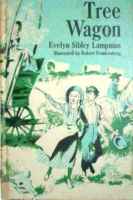 Lewelling
Lewelling
 Henderson
Henderson
 Henderson Lewelling Encounter with Indians
Henderson Lewelling Encounter with Indians
Calif. Families
 Lewelling
Lewelling
 Henderson
Henderson
 Henderson Lewelling Encounter with Indians
Henderson Lewelling Encounter with Indians
| Contact |
In her article "Prospecting for Genealogical Gold Out West" at ancestry.com, Myra Vanderpool Gormley, CG, relates:
"A 1922 interview with William T. Toney, age ninety-five, who traveled across the plains when he was only twenty-two. Toney tells the story of Henderson Luelling whom everyone thought was some kind of fool for bringing his traveling nursery across the Plains. Luelling, says Toney, built two long, narrow boxes that fit into the bed of his wagon, filled each with charcoal, manure, and earth and planted apples, pears, plums, cherries, quinces, grapes, and other fruits in them. Luelling watered his plants night and morning. In spite of everyone's advice that he would never get them across the Plains, Luelling got the plants and trees to The Dalles, Oregon, where he took them out of their boxes, wrapped them carefully, and took them to the Columbia River to start a nursery. Ultimately Luelling's fruit trees became the parent stock of most of the orchards in Oregon's Willamette Valley."
His encounter with Indians during their trip from Iowa to Oregon is depicted on a mural in Milwaukie.
Aaccording to oral history Indians set out to attack them, and showed up on horses with war paint, but on seeing the wagon full of trees backed off. They left and came back, without war paint, in canoes and helped them with a dangerous river crossing.
In an article in the Oregon Historical Quarterly (2.) it says:
"Eliza Luelling, one of Henderson's daughters, later related that a Christian Indian told her father that the nursery saved the lives of the family when they camped near a large band of Indians: 'He said that the Indians believed that the Great Spirit lived in trees and seeing a man crossing the wilderness with a wagonload of them, they thought that he must be under the special care of the Great Spirit, and so they did not harm him'"
 In the children's book "Tree Wagon", Evelyn Sybley Lampman describes Henderson's explanation on page 166 as follows:
In the children's book "Tree Wagon", Evelyn Sybley Lampman describes Henderson's explanation on page 166 as follows:
"I know why we haven't had any trouble with Indians. It's because of the tree wagon. They believe that spirits live in trees. And since we have this wagonload of trees, each one with its own special spirit inside, we have special protection. When that war party came at us this morning - and it was a war party - they thought they'd insulted the spirits in the trees. The only way they could make it up to them was by helping us on our way."
Later on Indians take Mrs. Lewelling, who was pregnant, part way down the river in a canoe, because the bumpy wagon ride was making her sick.
According to the book, Lewelling met Dr. Whitman along the way. Presbyterian lay physician Dr. Marcus Whitman, had been chosen to lead one of the early missions established in Oregon. Whitman's mission was among the comparatively warlike Cayuse Indians. They tried to teach the Indians to use grist mills but could not convince them to become farmers. On November 29, 1847, the Whitman Mission was attacked by Cayuse Indians. Mr. and Mrs. Whitman and 14 others were killed. Measles is thought to have been at the root of the violence: there had been an epidemic among the Cayuse, and rumors spread that the Whitmans were trying to poison them.
It was rumored that these were the same Indians who had helped the Lewellings. According to some, these two stories got put together into a story that Indians attacked the wagon train and were killing people, but saved the Lewellings when they saw the tree wagon.
References: